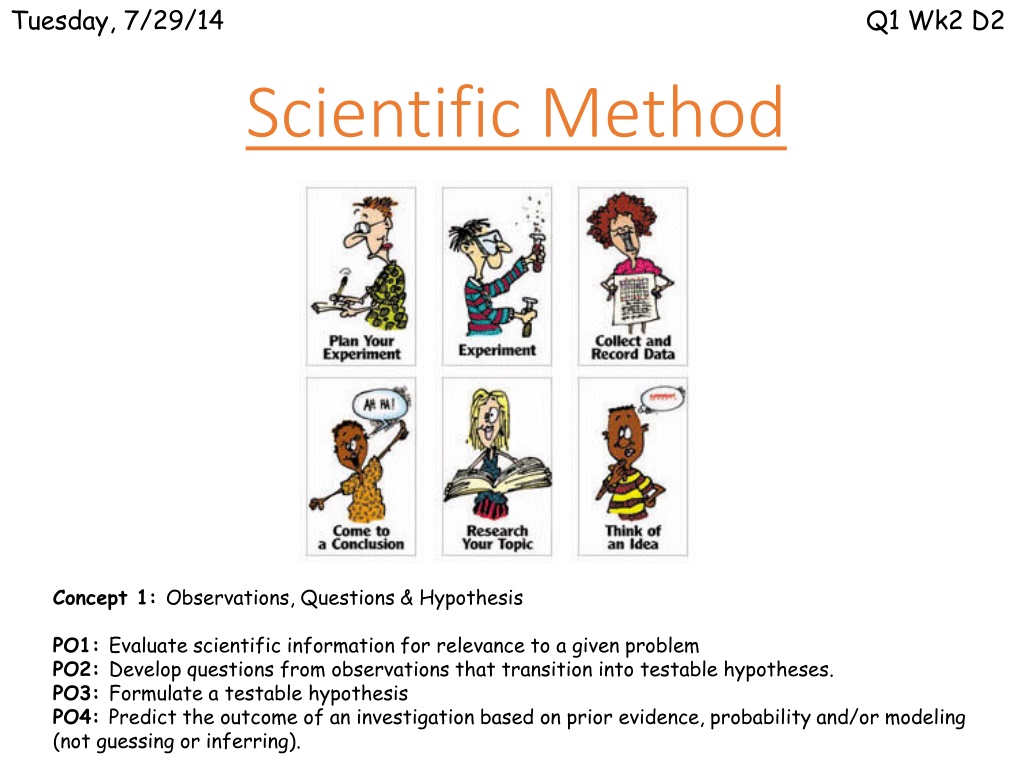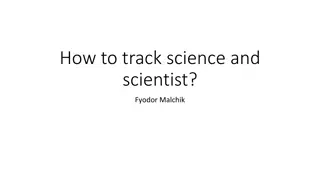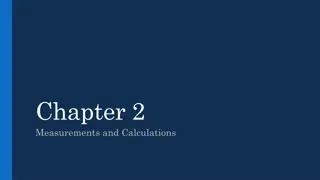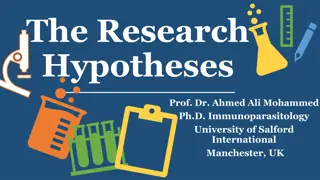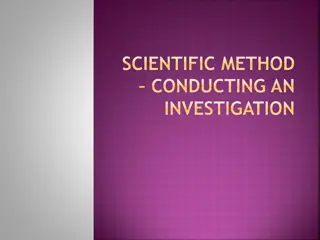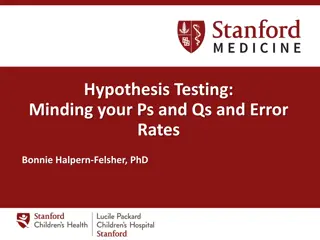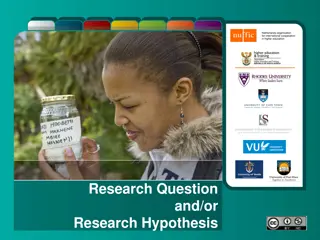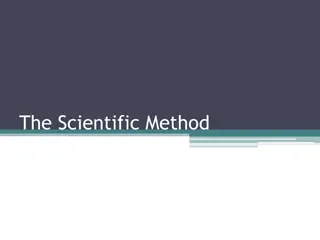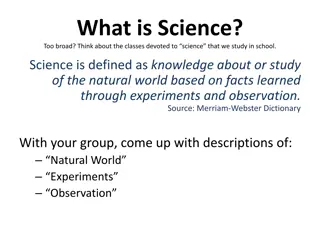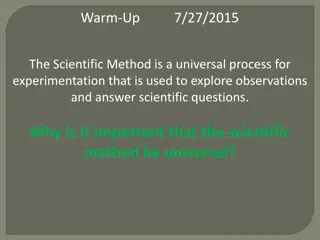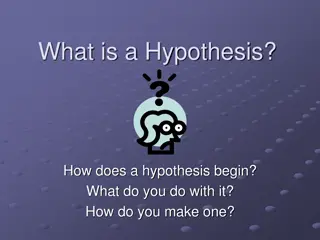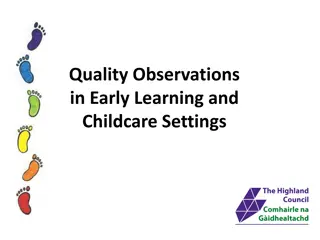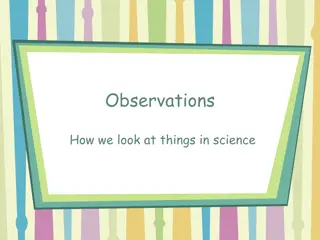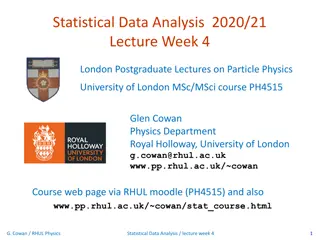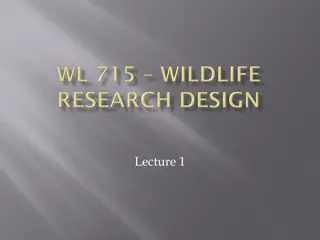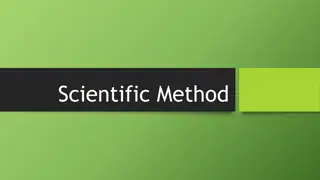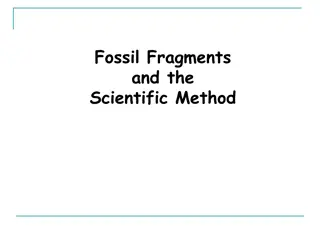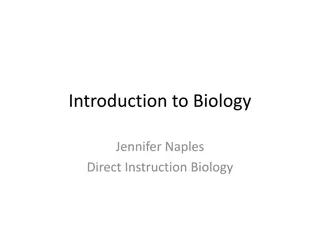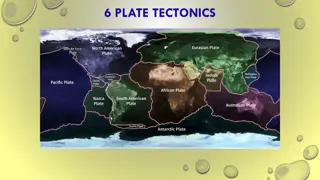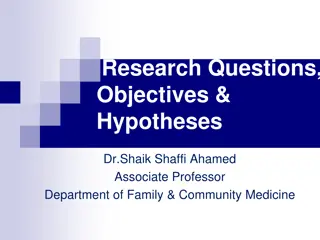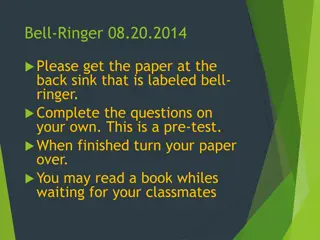Understanding the Scientific Method: Observations, Questions, and Hypotheses
Explore the scientific method concept of making observations, asking questions, and forming hypotheses. Learn the difference between causal and descriptive questions and practice applying them. Understand how to approach a situation like a non-starting washing machine through causal and descriptive inquiries.
Download Presentation

Please find below an Image/Link to download the presentation.
The content on the website is provided AS IS for your information and personal use only. It may not be sold, licensed, or shared on other websites without obtaining consent from the author. Download presentation by click this link. If you encounter any issues during the download, it is possible that the publisher has removed the file from their server.
E N D
Presentation Transcript
Tuesday, 7/29/14 Q1 Wk2 D2 Scientific Method Concept 1: Observations, Questions & Hypothesis PO1: Evaluate scientific information for relevance to a given problem PO2: Develop questions from observations that transition into testable hypotheses. PO3: Formulate a testable hypothesis PO4: Predict the outcome of an investigation based on prior evidence, probability and/or modeling (not guessing or inferring).
Steps to the scientific method? 1ST YOU MAKE OBSERVATIONS 1ST YOU MAKE OBSERVATIONS 2nd ask questions 3r d come up with a possible hypothesis 3r d come up with a possible hypothesis 4th perform your experiment 4th perform your experiment 5th analyze your data
Causal VS Descriptive There 2 types of questions: CAUSAL & DESCRIPTIVE CAUSAL: of a phenomenon by asking WHY or HOW something happens or the way it is. -questions into the cause(s) or explanation(s) DESCRIPTIVE: -asks WHAT , WHERE , WHEN , & WHO of some observed object, an event or situation.
WHAT TYPES OF QUESTIONS ARE THESE? Why is the sky blue? Causal Who are my lab partners? Descriptive What am I going to learn in this class? Descriptive How does it get so hot in Arizona? Causal When does school start? Descriptive Why do dogs bark? Causal
WORKING THE WASHING MACHINE It s time for you to do a load of laundry. You go to start the washing machine, but nothing happens Come up with a causal question & a descriptive question: 1. Causal: 2. Descriptive:
Causal & Descriptive Practice worksheet! Attach into sci. ntbk
Now come up with POSSIBLE reasons why it won't start
it's not plugged in the circuit breaker is out there is a wire loose
Those possible explanations were . HYPOTHESES
WRITING HYPOTHESES WHAT IS A HYPOTHESIS ANYWAY???
A reason supporting / justifying your prediction It is NOT an educated guess!
Prediction What you think will happen Prediction + Hypothesis = CLAIM
Lets practice making a CLAIM Scenario 1 Homework and class grades Make your claim, remember: CLAIM = (Prediction) + (Hypothesis) If I do homework my grade will be increase, due to consistent practice of the material
Lets practice making a CLAIM Scenario 2 Working out and obesity Make your claim, remember: CLAIM = (Prediction) + (Hypothesis) Working out will decrease obesity because burning calories causes weight loss.
Claims Practice Worksheet http://farm4.static.flickr.com/3088/2364667079_276791cbfa.jpg Handout- in sci. ntbk
Lets make a foldable! http://1.bp.blogspot.com/-juUS580Y6lU/TwCyTkkc2yI/AAAAAAAAAv4/MQDgJeg7N1k/s1600/DSCF9858.JPG
Q1 WK2 D5 Experiment Variables 1. 1. INDEPENDENT VARIABLE INDEPENDENT VARIABLE 2. DEPENDENT VARIABLE 2. DEPENDENT VARIABLE 3. CONSTANTS 3. CONSTANTS 4. CONTROL GROUP 4. CONTROL GROUP FOLDABLE!
1. INDEPENDENT VARIABLE (IV) The variable that is being CHANGED or MANIPULATED Also known as the IV in an experiment. In the picture to the left, what is the I.V.? (The variable being CHANGED / MANIPULATED) Fertilizer!
2. Dependent Variable: (DV) The responding variable; the variable that is being MEASURED. Also known as the DV in an experiment! EXAMPLE: A group of students were given a short course in speed-reading. The instructor was curious if a monetary incentive would influence performance on a reading test taken at the end of the course. Half the students were offered $5 for obtaining a certain level of performance on the test, the other half were not offered money. The incentive (money) after a course in speed- reading Independent Variable: Dependent Variable: Performance on a reading test
Independent VS Dependent Variable EXAMPLES: 1. There will be a statistically significant difference in graduation rates of at-risk high school seniors who participate in an intensive study program as opposed to at-risk high-school seniors who do not participate in the intensive study program." IV: IV: DV: DV: Intensive study program Graduation rate of at-risk high school seniors
Independent VS Dependent Variable EXAMPLES: A scientist wants to investigate whether plants need sunlight to grow. The hypothesis being tested is: 2. Plants require sunlight to grow. The scientist placed one tray of sunflower seedlings in the sun and another tray of sunflower seedlings in a cupboard in the laboratory. The seedlings were watered and after 6 weeks the height of each seedling was measured. I.V. : The amount of sunlight given to each tray of sunflower seedlings D.V. : The height of each sunflower seedlings after 6 weeks
3. CONSTANTS All variables that MUST remain the same during the experiment. Mrs. Ellison has a patch of sweet corn behind the school. In the past, she has only planted corn without fertilizer. She wants to see if the sweet corn will grow better with a fertilizer from her cat s litter box. Mrs. Ellison plants one row of corn with the fertilizer and another row without the fertilizer. Both rows were planted in the same area and in the same type of soil. Both rows were also planted with the same exact type of seed. 1. Seed type 2. Soil type 3. Area planted 4. Sun exposure 5. Amount of water given 6. Tools used to plant seeds 7 .
Identifying Variables- Practice 1. Fertilizer in soil increases flower production. IV:______, DV: _______, 2 Controls: _____ & _____ 2. If zinc tablets are taken, then the number of colds per year is reduced. IV: _____, DV: ______, 2 Controls: _____ & _____ 3. If water is present, then the number of bacteria in garbage bins increases. IV: _____, DV: _____, 2 Controls: _____ & _____
4. CONTROL GROUP 4. CONTROL GROUP A group that is NOT being manipulated or is NOT BEING TESTED by an experimental process. It is used to compare results to the experimental group.
Kindergarten children will select certain types of food because of its color. Sandy put food coloring into 4 identical bowls of mashed potatoes as follows: Bowl 1 (green), Bowl 2 (red), Bowl 3 (blue), and Bowl 4 (yellow). Each child chose a scoop of potatoes of the color of their choice. Sandy did this experiment using 100 kindergarten students. She recorded the number of students that chose each color. -Independent Variable: -Dependent Variable: -Controlled Variable(s):
Plants compete for space because they need room to grow. Mary bought a mixture of flower seeds and some potting soil. Into each of the 5 plastic cups, she placed the same amount of soil. The following numbers of seeds were placed in each cup: Cup 1 (2 seeds), Cup 2 (4 seeds), Cup 3 (8 seeds), and Cup 4 (16 seeds). In the last cup she planted 32 seeds. After 25 days, she determined which set of plants looked best. Independent Variable: Dependent Variable: Constants:
SpongeBob Variables Practice!!! http://upload.wikimedia.org/wikipedia/en/3/3b/SpongeBob_SquarePants_main_characters.png
